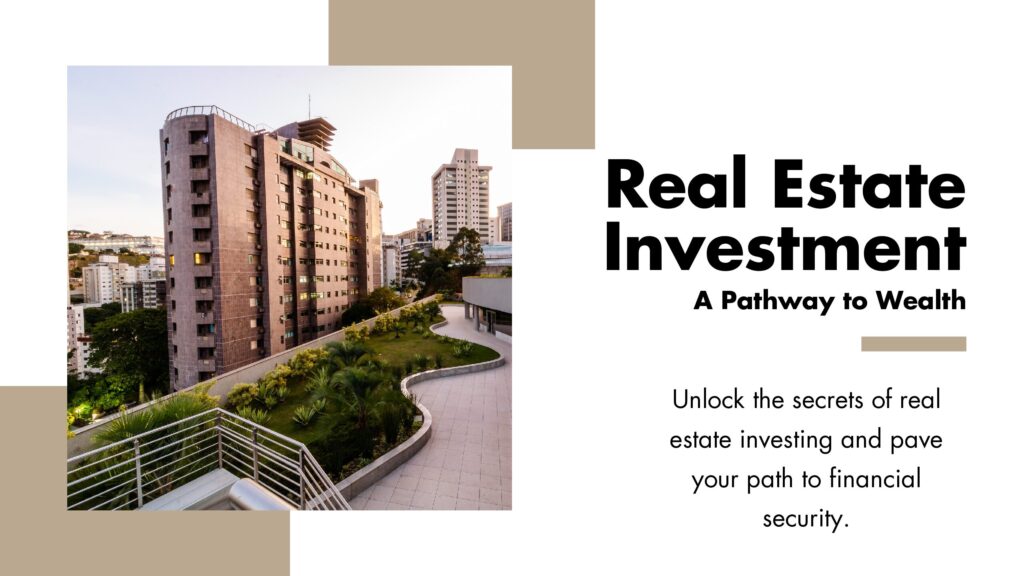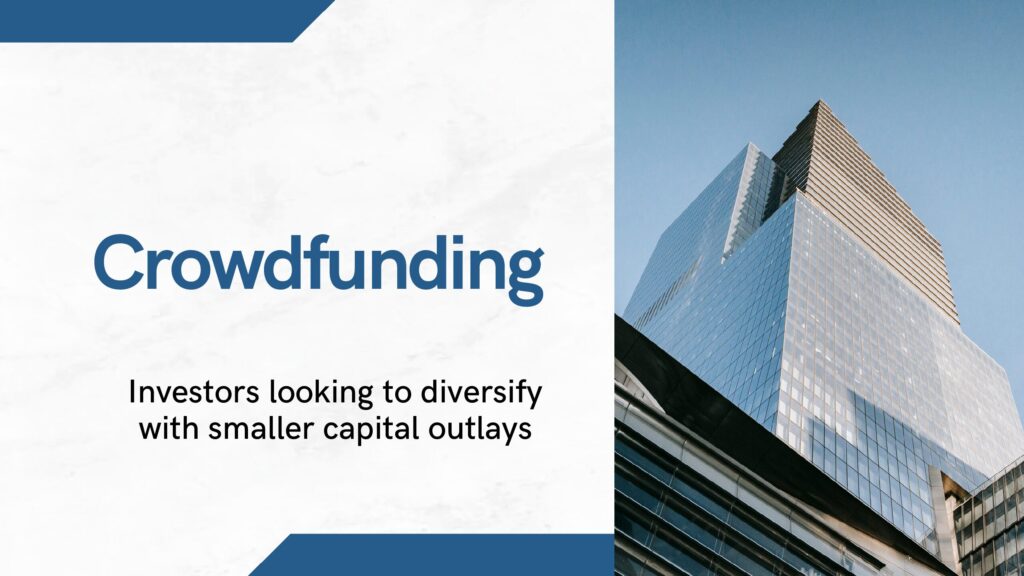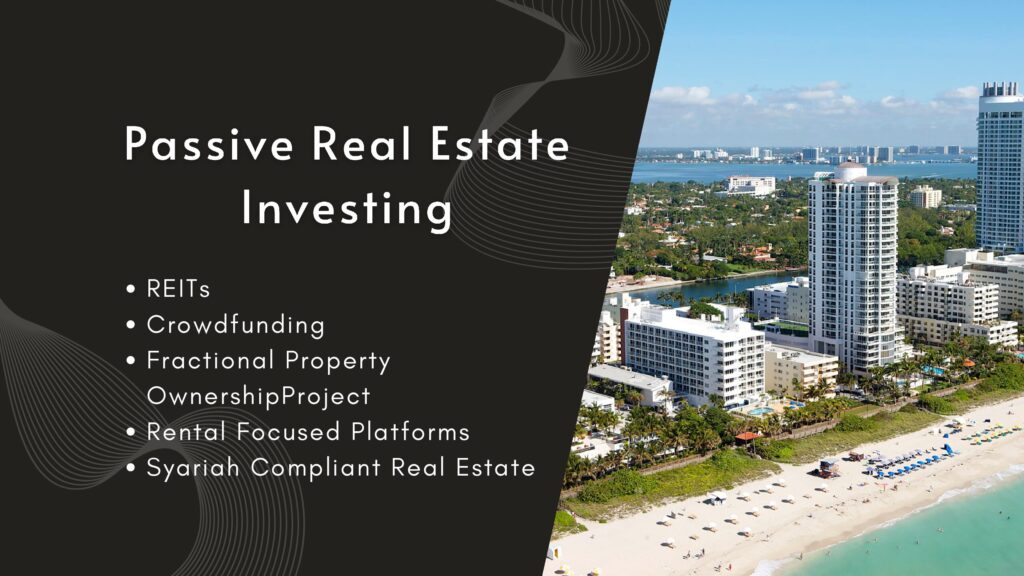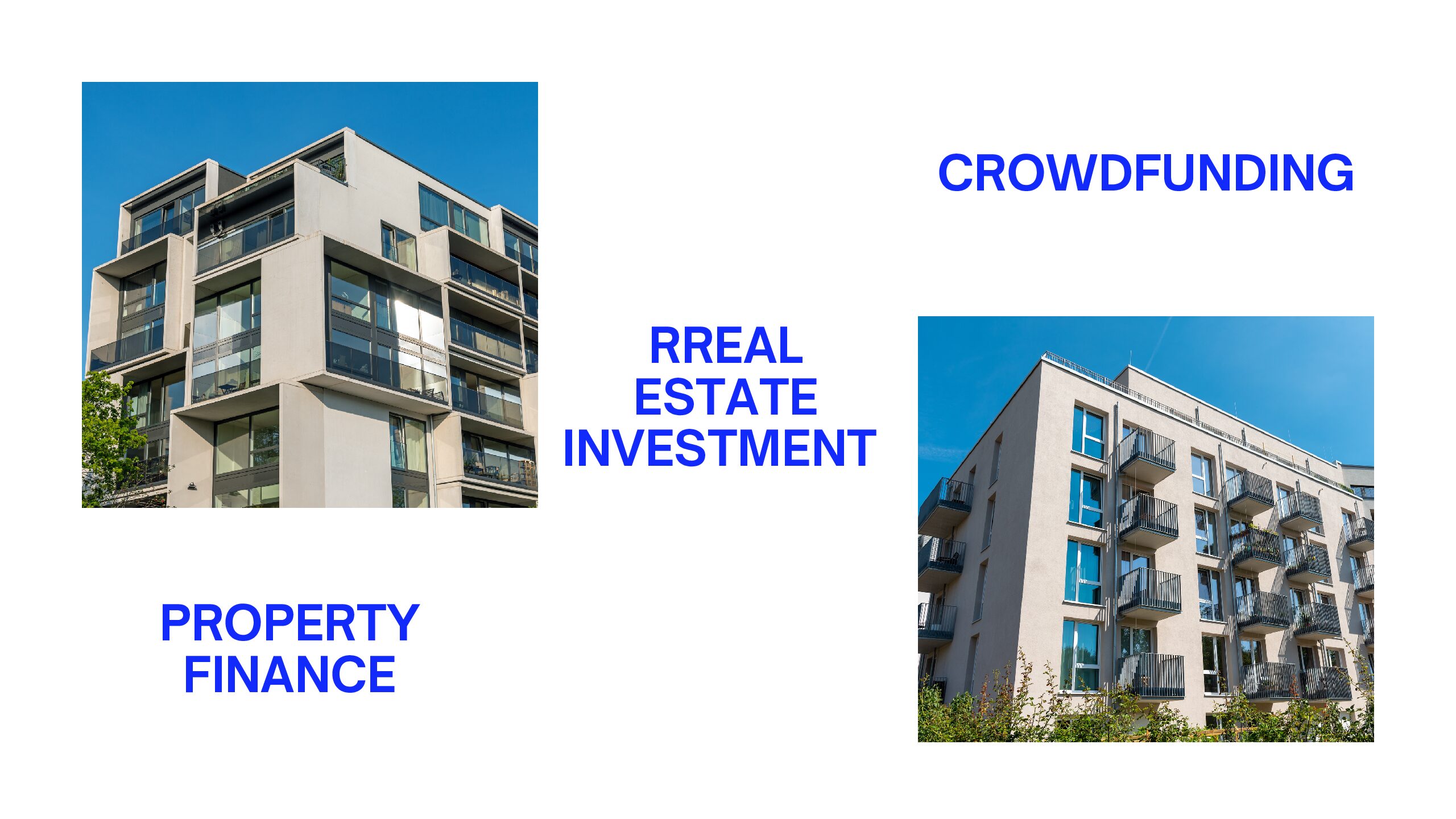Learn how to invest passively through REITs and Crowdfunding. Discover how rental income can build steady returns with low effort.
Introduction
Passive real estate investing in 2025 is easier than ever. You can earn rental income and property gains without management headaches. Whether you’re a busy professional or completely new to investing, there’s a strategy suited for you. One popular option? REITs (Real Estate Investment Trusts). These let you invest in properties like malls or offices for as little as RM100—no landlord duties required. REITs pay dividends, making them ideal for passive income. Alongside crowdfunding and rental funds, they’re a stress-free way to start in 2025.
What Is Passive Real Estate Investing?
Passive real estate investing means earning property income without landlord duties. No tenant problems. No repair headaches. You invest through special platforms. Experts do all the work for you.
This approach offers several advantages:
- No need to personally manage properties
- Professional teams handle maintenance and tenant issues
- You earn regular income without active involvement
- Lower startup costs than traditional property ownership
- Flexible investment amounts to fit your budget
The system works by pooling resources with other investors. It’s ideal for those who want property exposure without the hands-on work.
Perfect for investors who:
Ideal for those looking to diversify their portfolio?
Great for investors short on time for property management.
Appeals to those who prefer steady, predictable returns.
Want to start with a smaller investment.
Passive vs. Active Real Estate Investing
| Factor | Passive Investing | Active Investing |
| Time Required | 1–2 hours/month | 60+ hours/month |
| Entry Cost | RM100+ (REITs/crowdfunding) | RM50,000+ (down payment) |
| Risk Level | Lower (diversified portfolios) | Higher (single-property risk) |
| Best For | Beginners, busy professionals | Experienced investors |
Why Choose Passive Real Estate in 2025?
- No Landlord Hassles: Avoid dealing with tenant issues or property repairs.
- Diversification: Invest in various properties and regions with minimal capital.
- Inflation Hedge: Real estate often appreciates over time, protecting against inflation.
- Technological Advancements: Platforms now offer data-driven insights to identify high-growth areas.
5 Beginner-Friendly Passive Real Estate Investing Strategies
1. Real Estate Investment Trusts (REITs)
REITs are like mutual funds for property. By investing, you own shares in real estate companies. These firms manage properties across sectors – homes, offices, factories, and hospitals.

Why REITs Are Ideal for Beginners:
- Low Barrier to Entry: You can start with as little as RM100 or $10.
- REITs are easy to trade – Buy or sell shares anytime, just like stocks. No waiting to liquidate physical property. The exchange allows easy entry and exit
- Diversification: Spread your risk across multiple properties and sectors.
Best for: Investors seeking liquidity and regular dividends.
How it works: REITs own and operate income-generating real estate. When you buy REIT shares, you receive portion of the rental income in the form of dividends.
Top Malaysian REITs:
- Axis REIT: Industrial and office properties.
- Sunway REIT: Retail, hospitality, and healthcare.
- Pavilion REIT: Retail properties in prime locations.
Investment Highlights:
- Minimum Investment: As low as RM1.50 per share.
- Average Returns: 5–9% annually.
- Liquidity: Traded on the stock exchange, allowing easy entry and exit.
2. Real Estate Crowdfunding
Crowdfunding platforms give access to real estate deals for as little as $100.
Best for: Investors looking to diversify with smaller capital outlays.
Crowdfunding made simple:
- Many investors chip in money together.
- They fund real estate projects online.
- You do not need to buy whole properties.
Crowdfunding gives you access to institutional-grade deals without needing millions.
Notable Platforms:
- Alixco (Malaysia): Offers equity and P2P lending opportunities in real estate.
- Ethis Malaysia (Shariah-compliant): Promotes ethical investment for startups and businesses. It provides quarterly updates and returns.
- Fundrise (USA): Provides diversified portfolios of residential and commercial properties.
- RealtyMogul (USA): Access to private REITs and individual property investments.
Investment Highlights:
- Minimum Investment: As low as RM500.
- Returns: 8–12% annually.
- Lock-in Period: Typically 5+ years.
- Transparent Returns: Most platforms offer projected IRRs and rental income forecasts.
- Risks: Illiquidity and currency exchange fluctuations for international platforms.

3. Fractional Property Ownership
Best for: Investors interested in owning a portion of physical properties.
Fractional ownership explained – Split property ownership with others. Share rental income and value gains proportionally.
Notable Platforms:
Brickz. my (Malaysia): Offers fractional ownership opportunities in Malaysian properties.
Investment Highlights:
- Minimum Investment: RM500.
- Returns: 6–9% annually.
- Benefits: Direct exposure to property markets without full ownership responsibilities.
4. Rental-Focused Platforms
Best for: Investors seeking steady rental income without property management.
How Arrived Homes Works – Buy shares in rental homes. They handle management; you earn from rent.
Investment Highlights:
- Minimum Investment: Approximately RM450.
- Returns: 6–8% annually.
- Holding Period: Typically 5–7 years.
- Note: Currency exchange considerations for international platforms.
5. Shariah-Compliant Real Estate Investments (i-REIT)
Best for: Investors seeking halal investment options.
How it works: Shariah-compliant investments avoid interest (riba) and invest in halal-certified properties.
Notable Options:
- Al-Aqar Healthcare REIT: Focuses on healthcare properties.
- Axis REIT: Invests in industrial and office properties with halal certification.
- Ethis Malaysia: Offers Shariah-compliant crowdfunding opportunities.
Investment Highlights:
- Minimum Investment: As low as RM1.50 per share.
- Returns: 5–8% annually.
- Compliance: Certified by the Securities Commission Malaysia.
Non-Shariah Compliance activities:
- Non-halal food related
- Tobacco and liquor-related
- Gambling
- Conventional banking & lending
- Conventional insurance
Passive Real Estate Income Example: Building Wealth with RM500/Month
Sarah, a 35-year-old KL teacher, invests RM500 monthly. She puts 70% in Malaysian REITs (KLCC, Sunway), earning RM350 in dividends. The other 30% goes to Fundrise, making RM150 after conversion.
Key takeaway: Mixing local and international investments balances currency risks and boosts returns.
Why mix local and global?
- Local investments avoid currency risks.
- Global assets can grow faster.
- Together, they balance your portfolio.
Malaysian Passive Real Estate Market Outlook for 2025
Property investing is tough for many Malaysians. Even “affordable” homes often cost over RM400,000. For most, owning real estate feels impossible. Passive investing offers a more accessible path.
No need to save for years or take huge loans. Beginners get an easy start. Experienced investors diversify safely. In Malaysia’s tricky property market, REITs offer a smart workaround.
Growth Trends to Watch
- Industrial REITs boom – Online shopping growth drives demand for warehouses and delivery hubs.
- Healthcare REITs: An aging population is boosting the need for healthcare facilities.
- Affordable crowdfunding – Platforms like Brickz let young investors start small (from RM500).
According to Bank Negara Malaysia, GDP is expected to grow by 4–5% in 2025.
Tax & Legal Considerations
| Investment Type | Tax Rule | Tip |
| Malaysian REITs | Dividends taxed as income | Hold long-term for potential tax benefits |
| US REITs | 15–30% withholding tax | File W-8BEN form to reduce to 15% |
| Crowdfunding | Capital gains tax applies | Declare in Malaysian tax filings |
Frequently Asked Questions (FAQs)
Q1: What is passive real estate investing?
A: Passive investing is defined – Earn property income without management work. Use REITs, crowdfunding, or rental platforms.
Q2: What is the minimum investment?
A: You can begin with as little as RM100 through REITs or crowdfunding platforms.
Q3: Are passive real estate investments risky?
A: Less risky than owning property directly, but returns may vary.
Q4: How are taxes handled?
A: REIT dividends are taxed as income. Crowdfunding profits may be subject to capital gains tax. Consult a tax advisor for specifics.
Q5: Can I invest passively in international properties?
A: Yes, platforms like Fundrise and RealtyMogul offer global exposure. Be mindful of currency exchange risks.
Q6: What returns can I expect?
A: Expected returns – Most passive options yield 5–12% yearly. REITs often pay 5–8%, crowdfunding 8–12%
Q7: How liquid are passive real estate investments?
A: REITs’ are highly liquid and traded on stock exchanges. Crowdfunding investments usually have longer lock-in periods.
Final Thoughts on Getting Started with Passive Real Estate Investing
Passive real estate investing in 2025 gives beginners an easy path to wealth. You can start small – even RM100 works – without landlord hassles. REITs let you own property shares. Crowdfunding opens doors to big projects. Rental funds handle everything for you. REITs and crowdfunding differ mainly in liquidity. REITs are easy to buy and sell on stock markets, so they’re very liquid. Crowdfunding usually locks your money in for years, so it’s harder to access. Many crowdfunding projects earn money from rent. That’s why they’re a type of rental income investing. REITs and crowdfunding are two of the most accessible passive real estate strategies today. Both REITs and crowdfunding can be part of a solid rental income investing strategy, depending on your risk tolerance. Crowdfunding platforms allow individuals to invest in real estate without high capital.
Malaysia’s market shows strong potential. Warehouses thrive from online shopping. Healthcare properties grow as the population ages. Government programs help first-time investors.
Follow these simple rules:
- Mix local and foreign investments
- Start with low-cost REITs
- Automate monthly contributions
- Reinvest your dividends
The best time to start was yesterday. Second-best is today. Pick one option and begin. Your future self will thank you.


